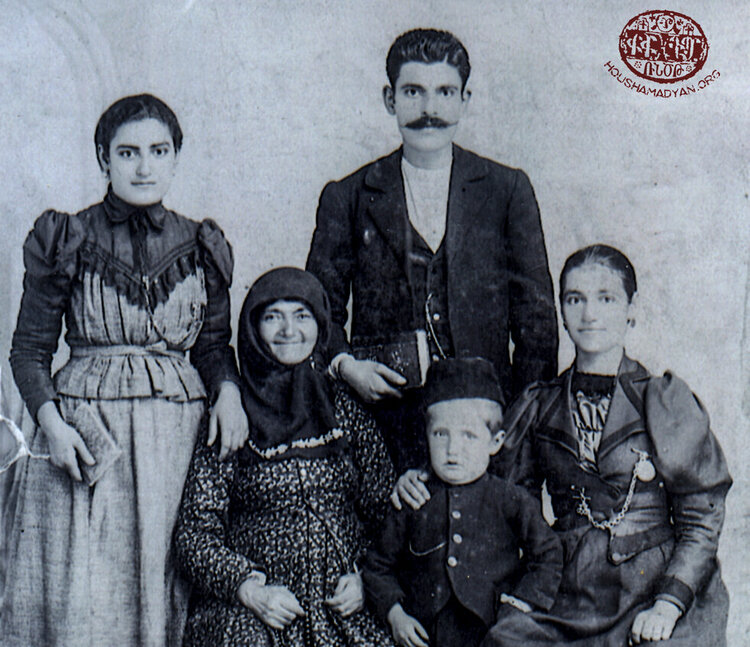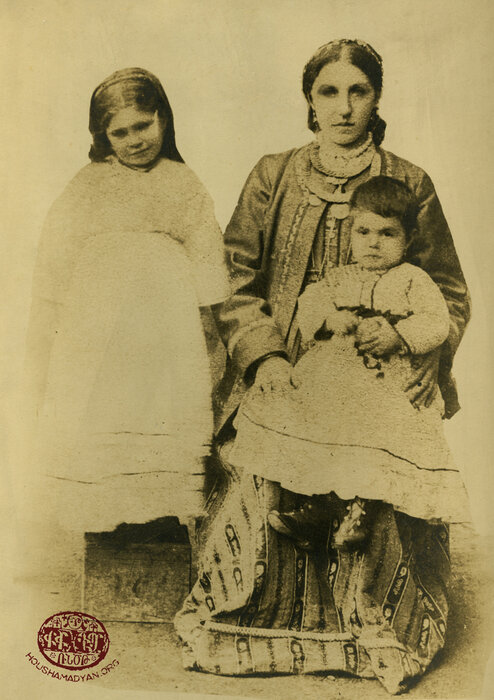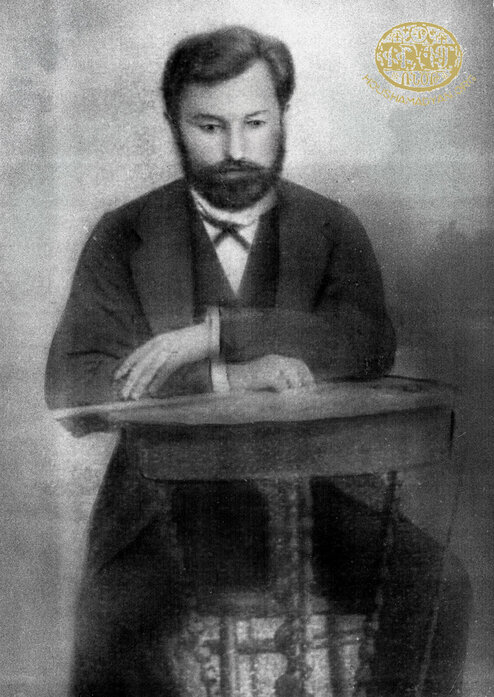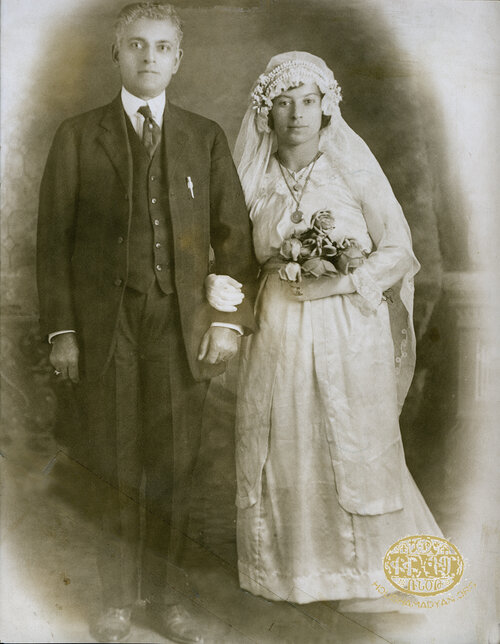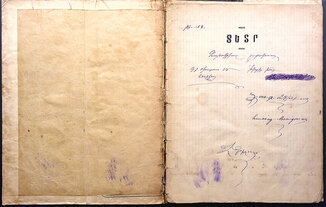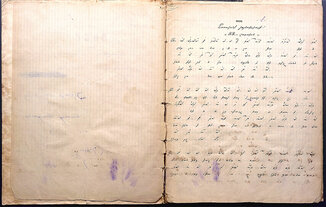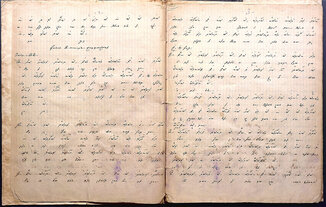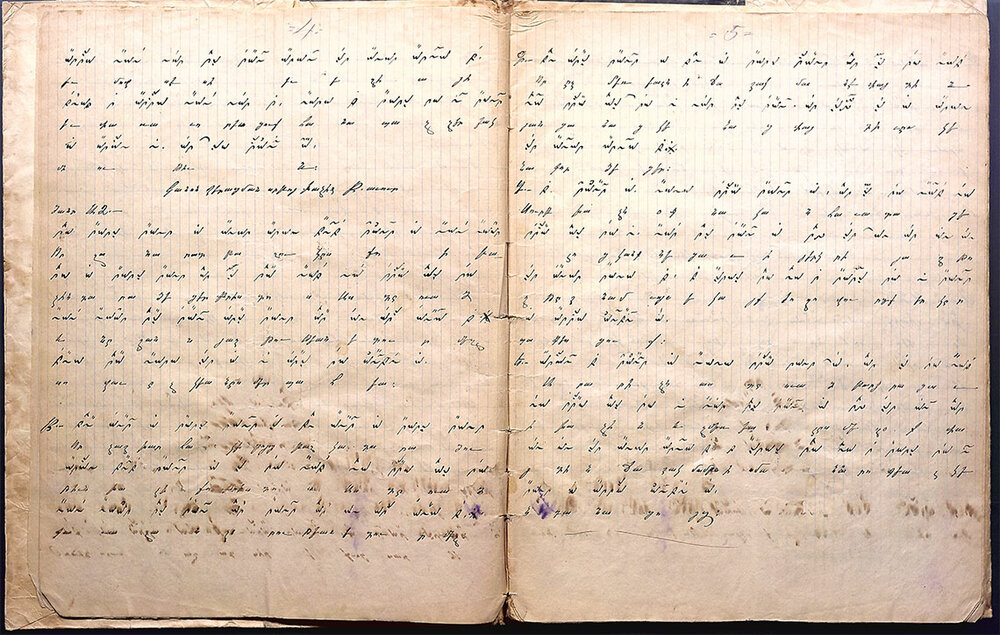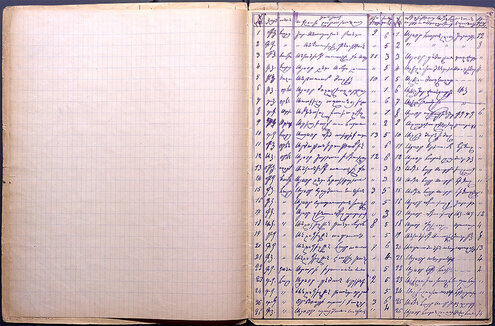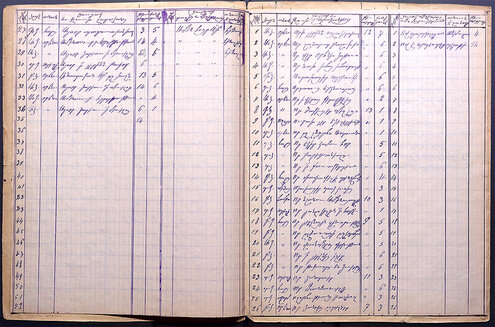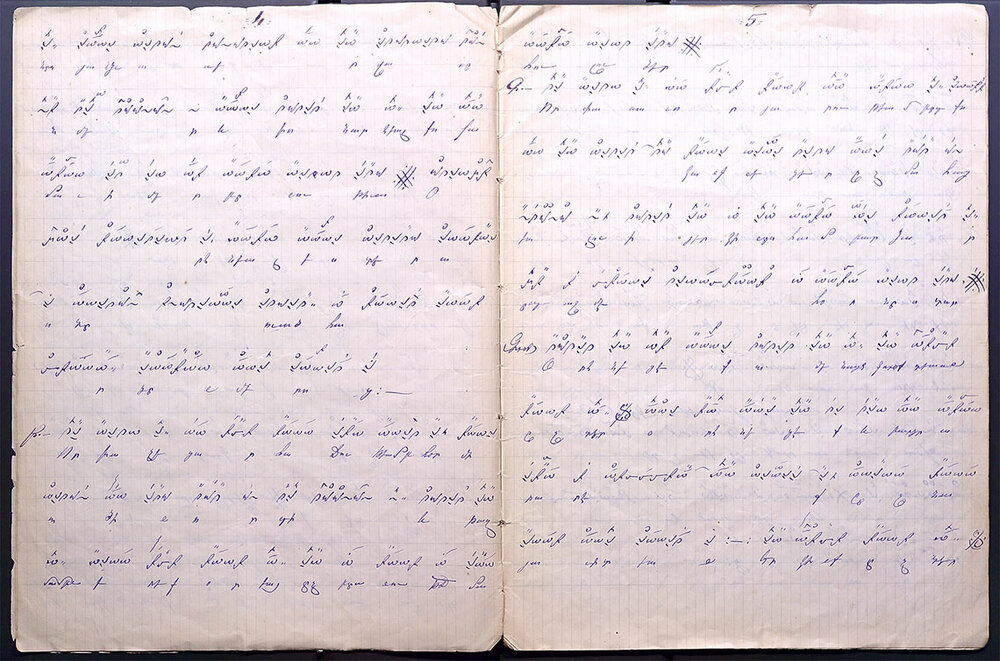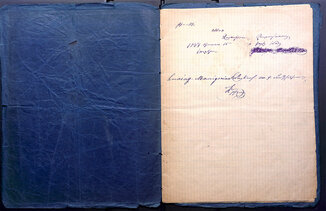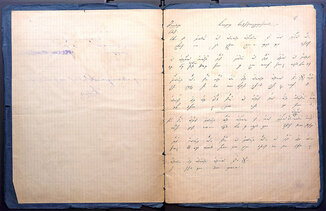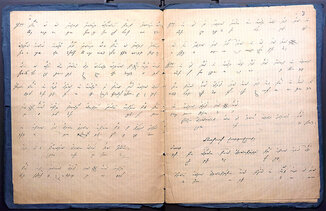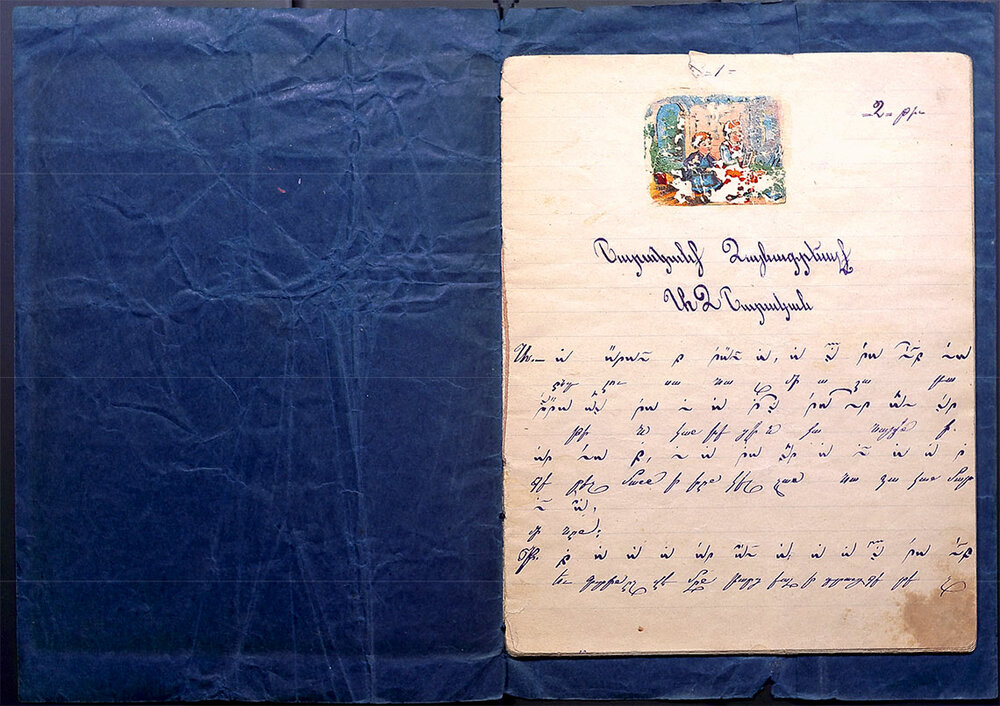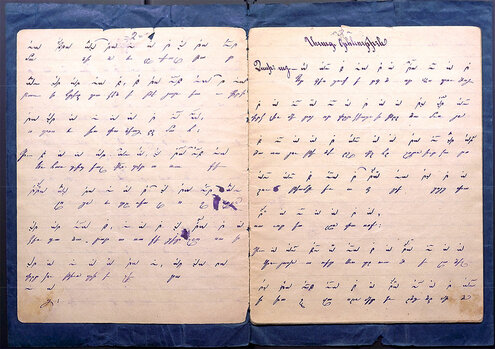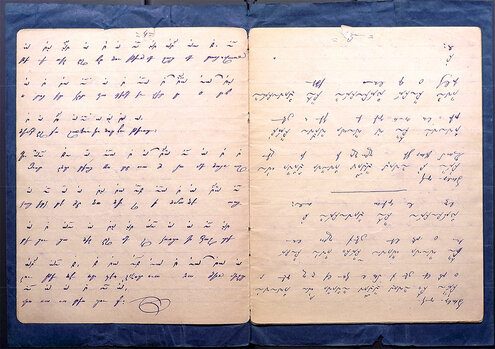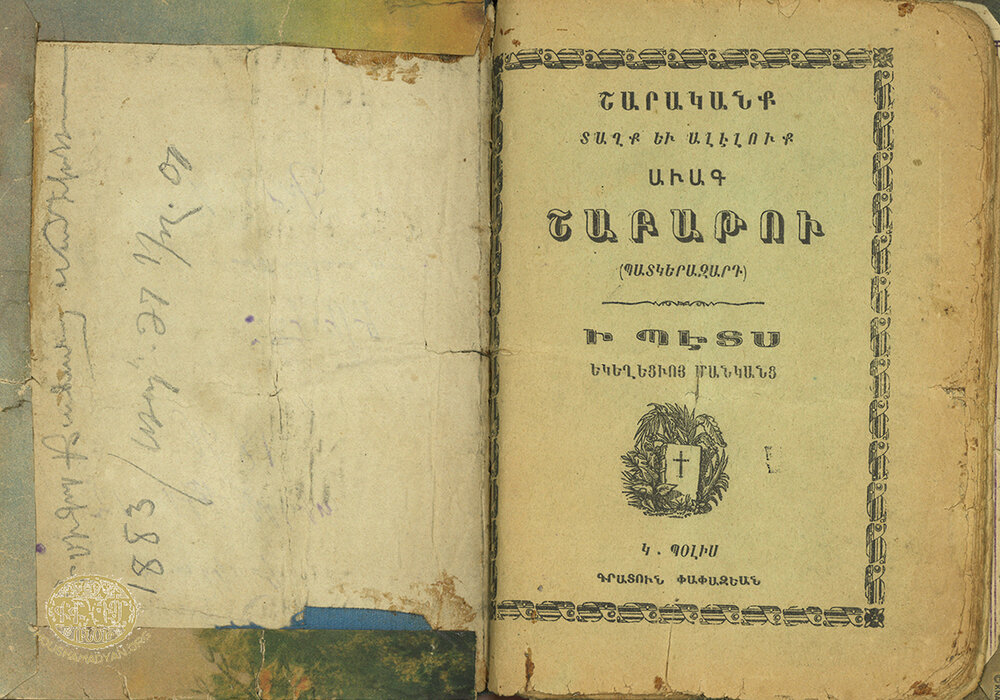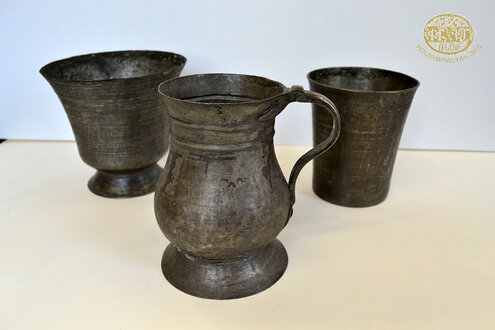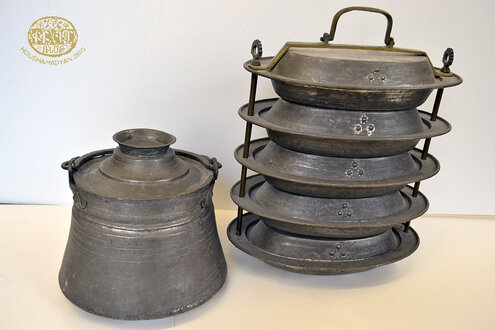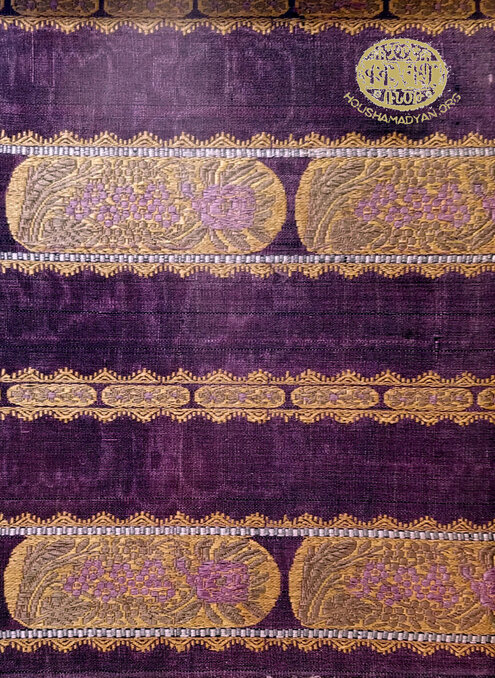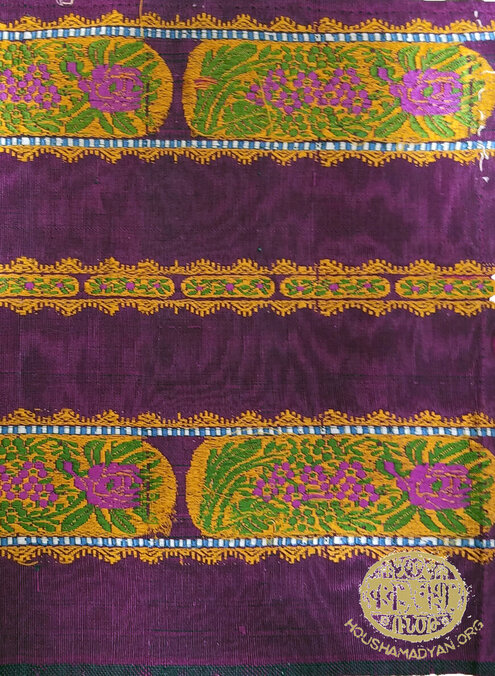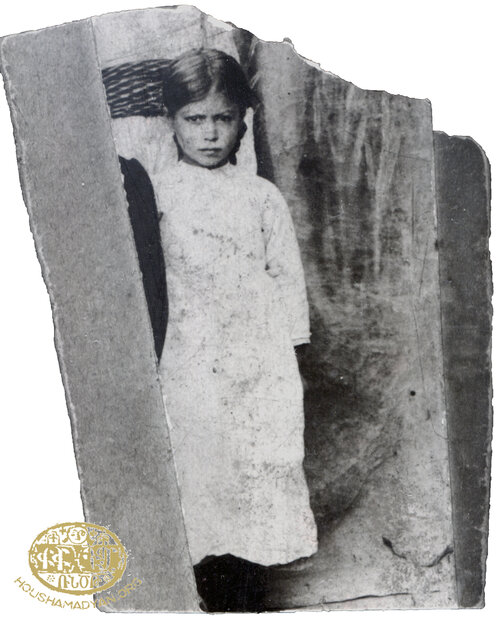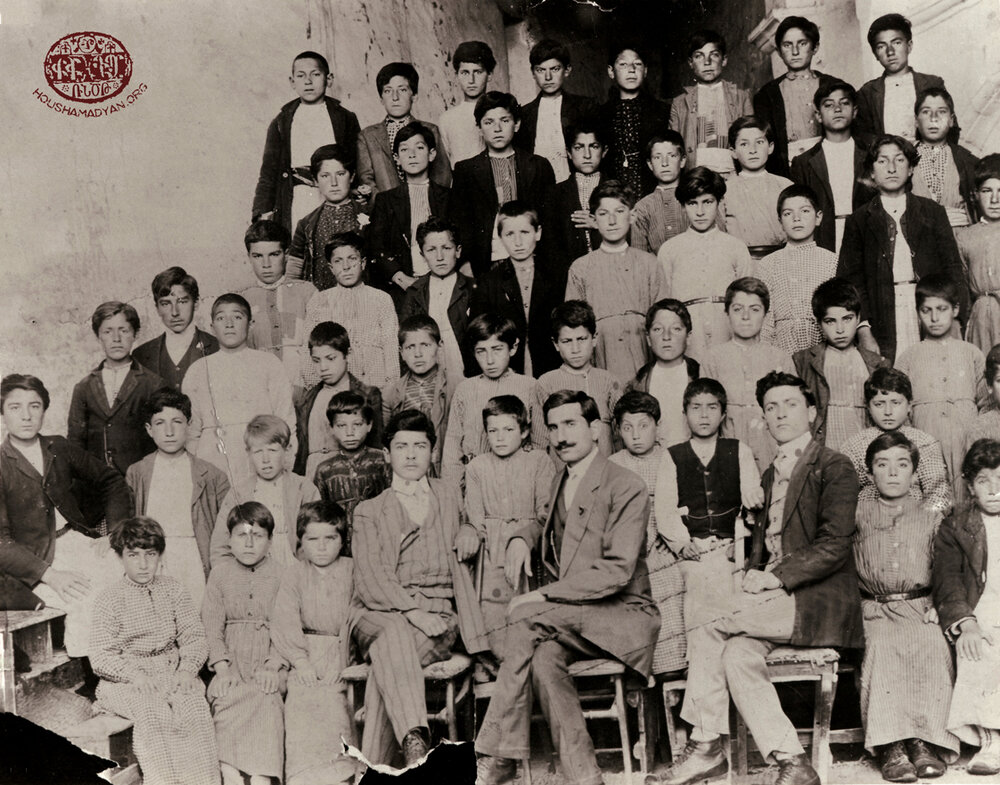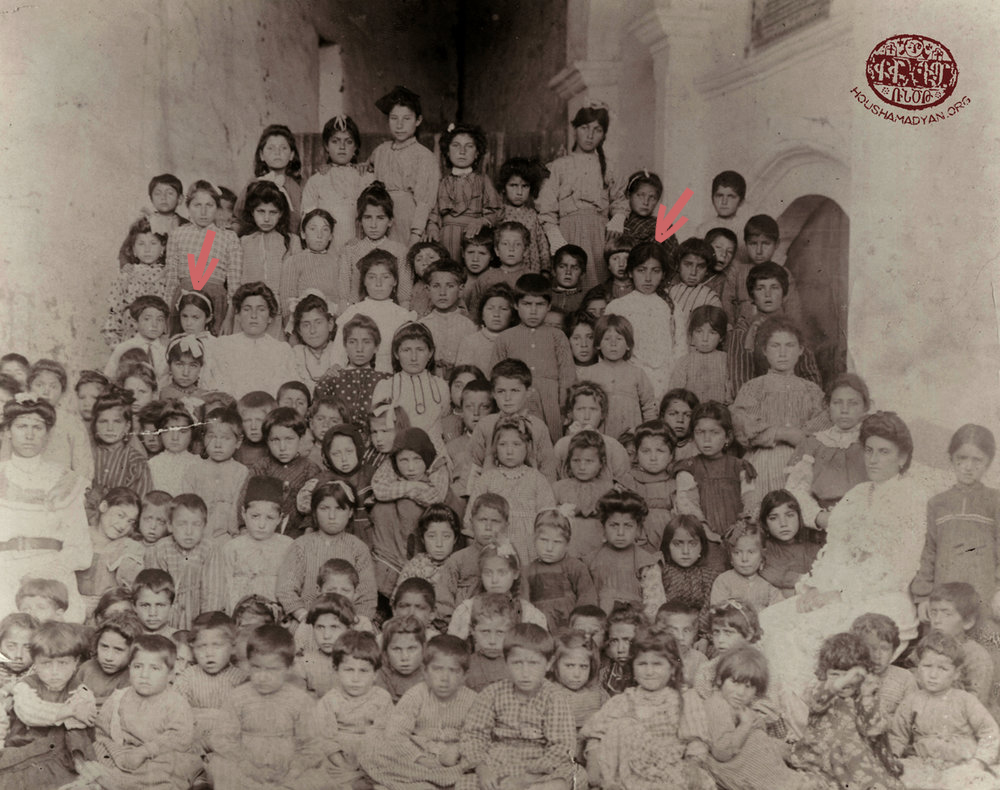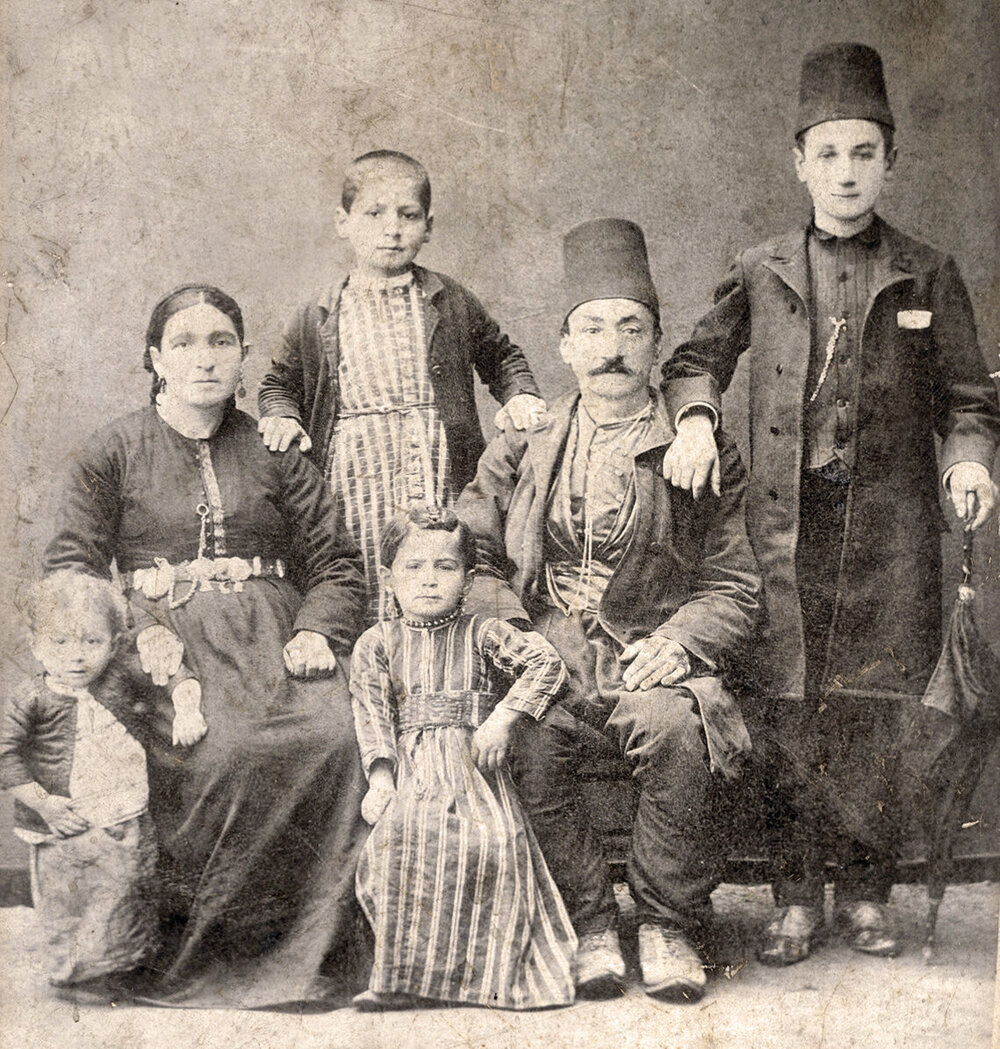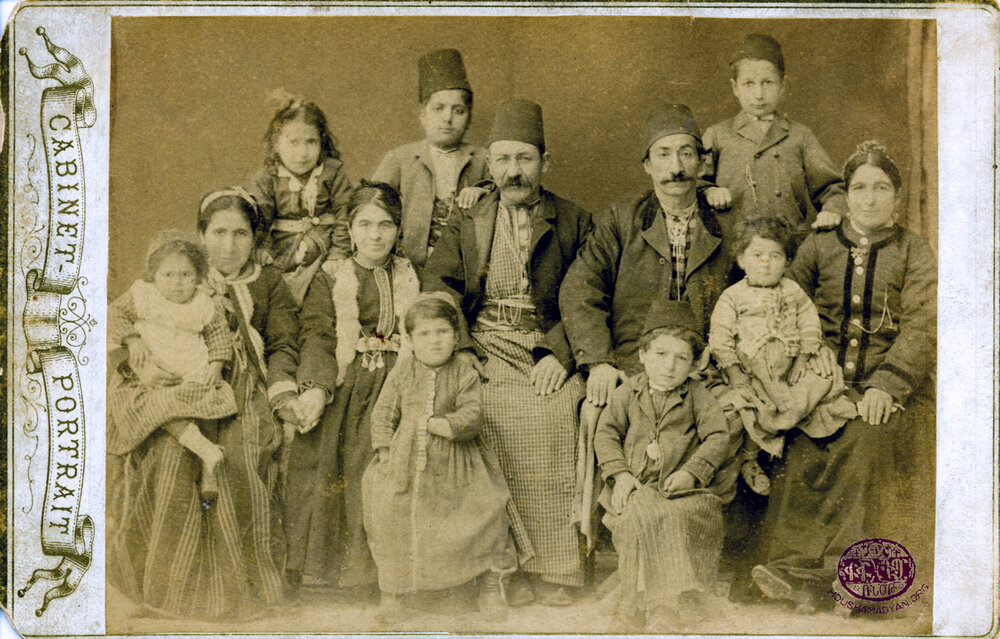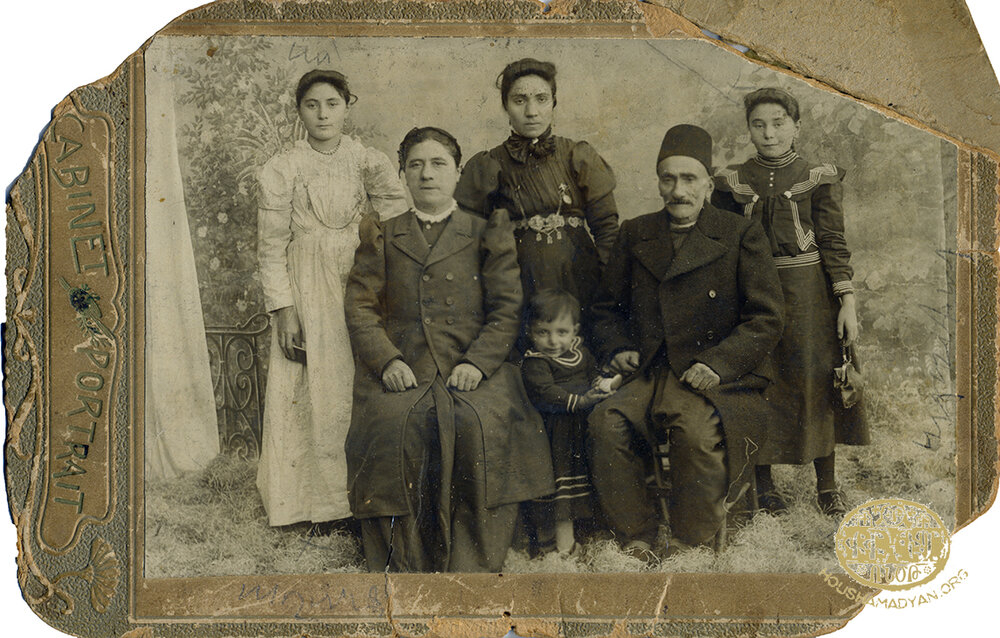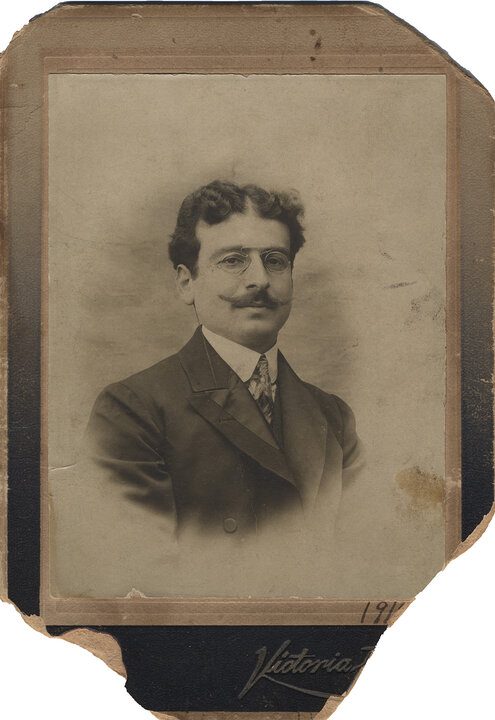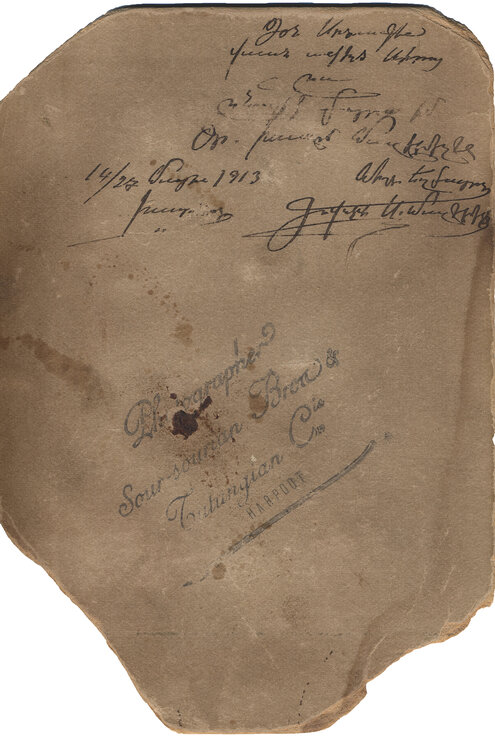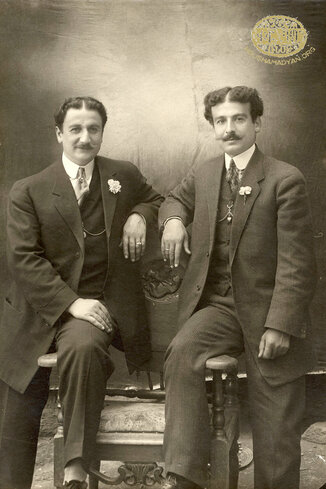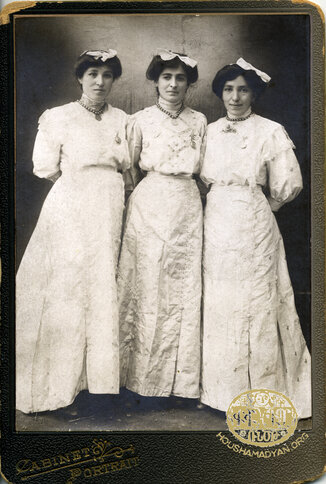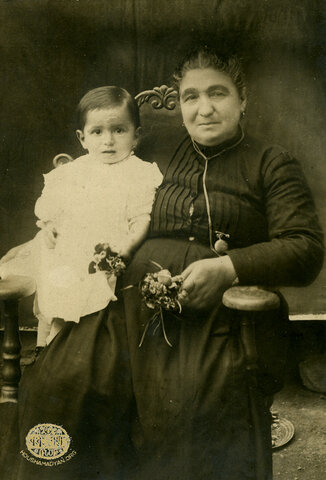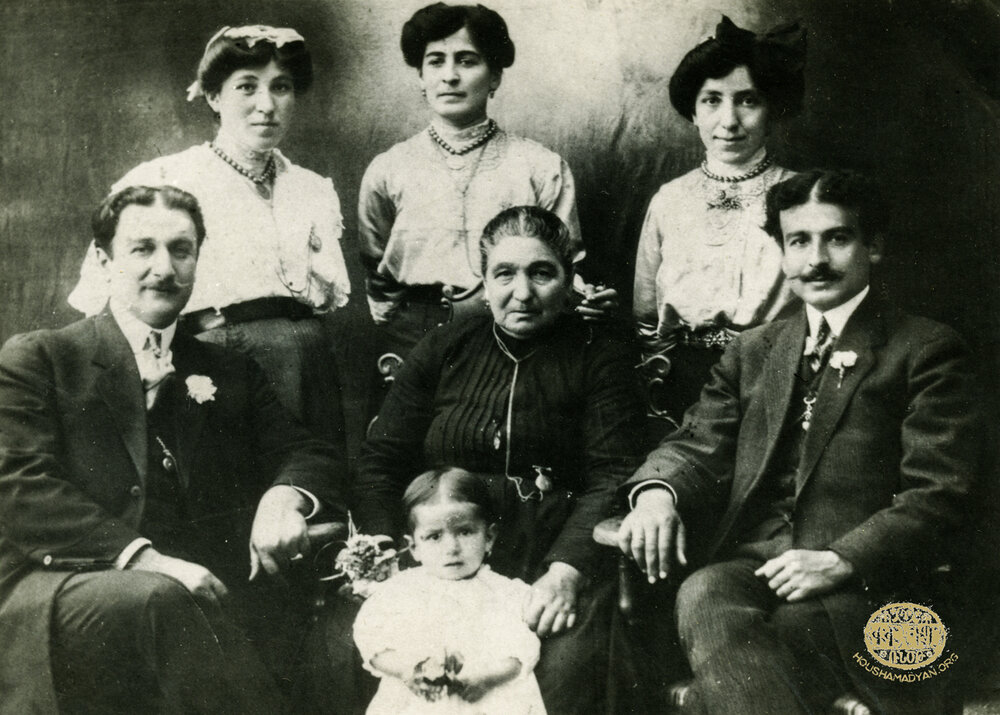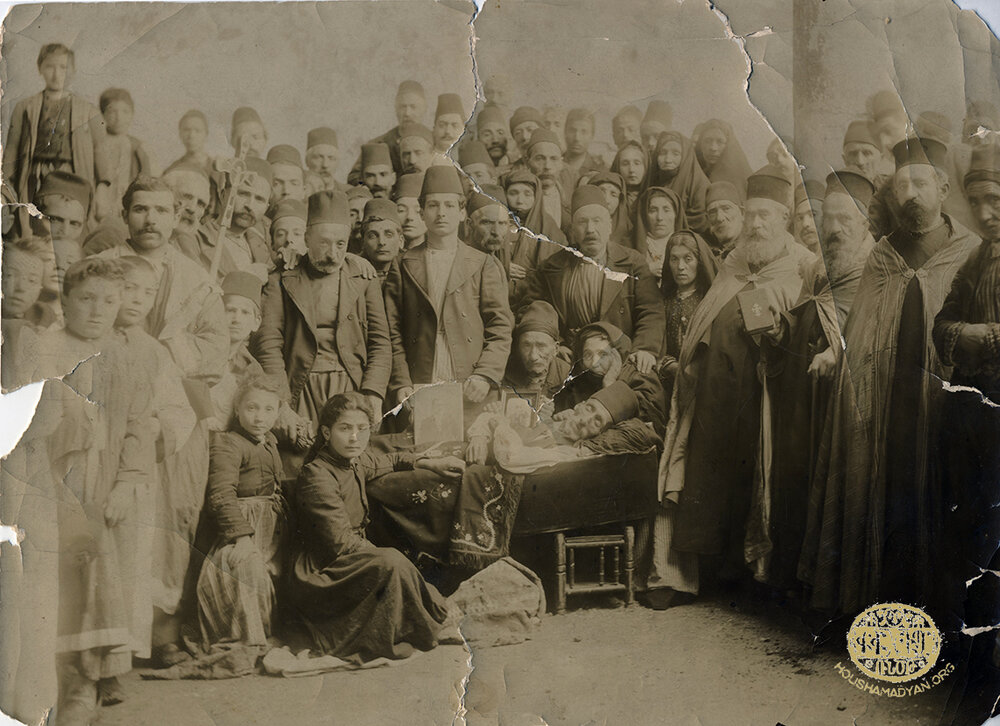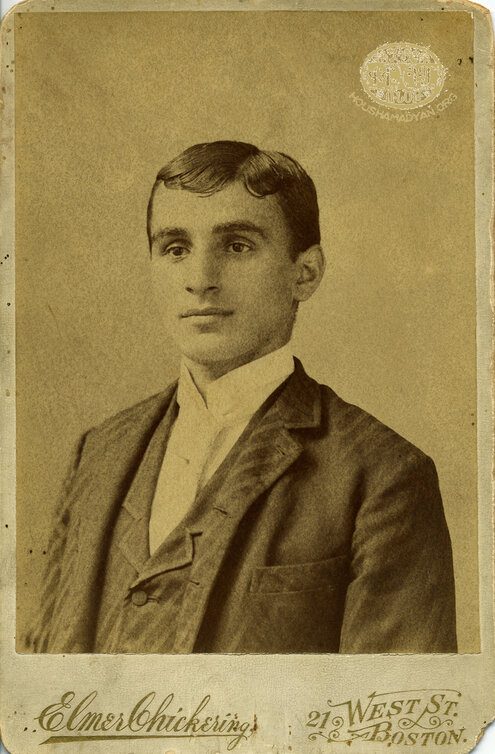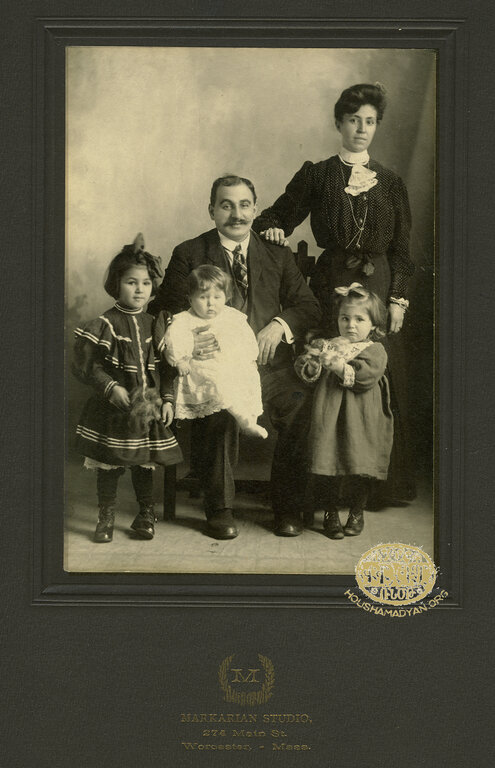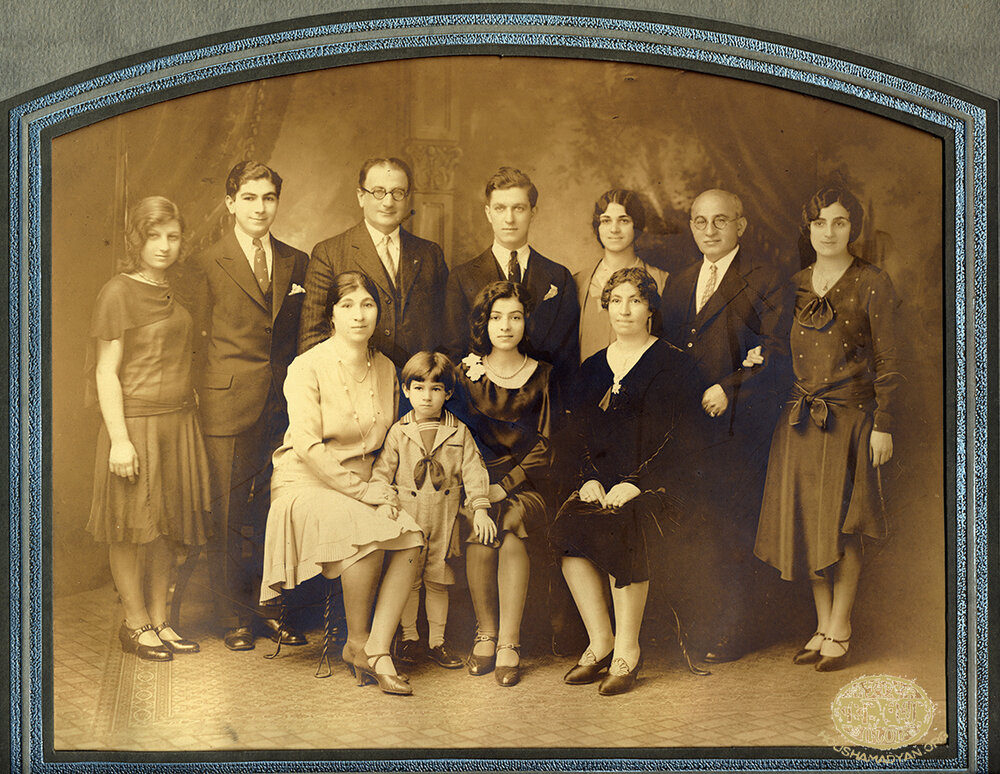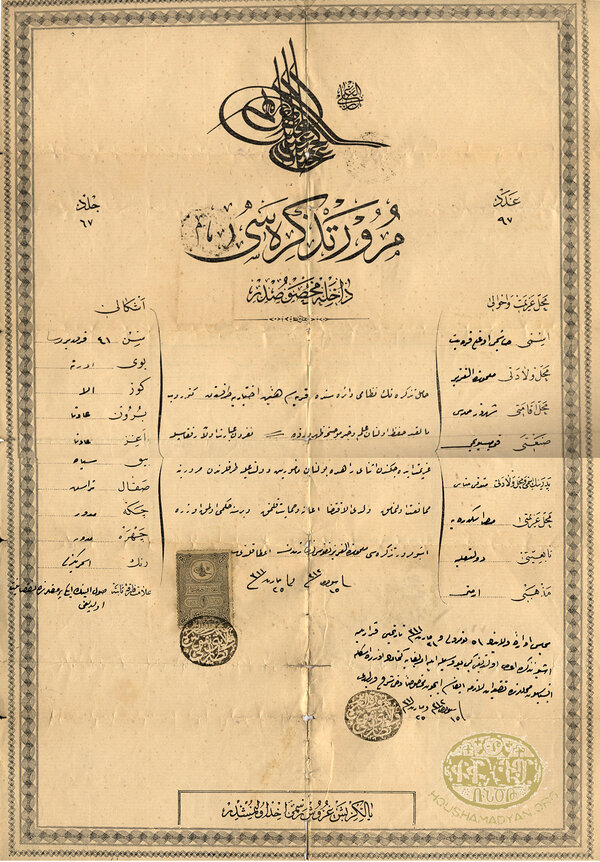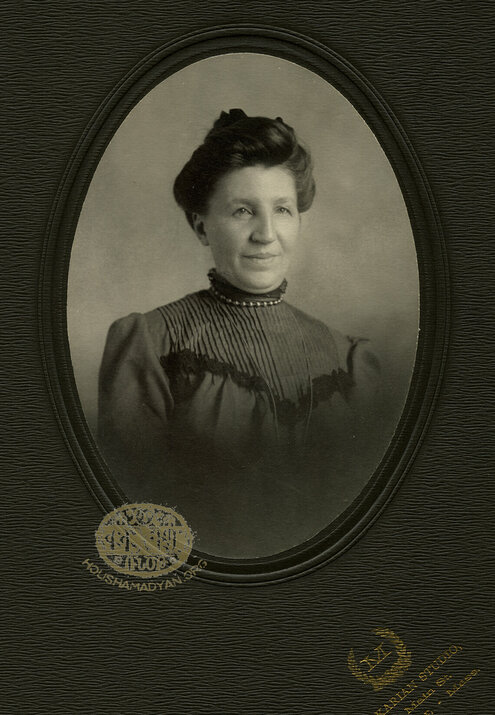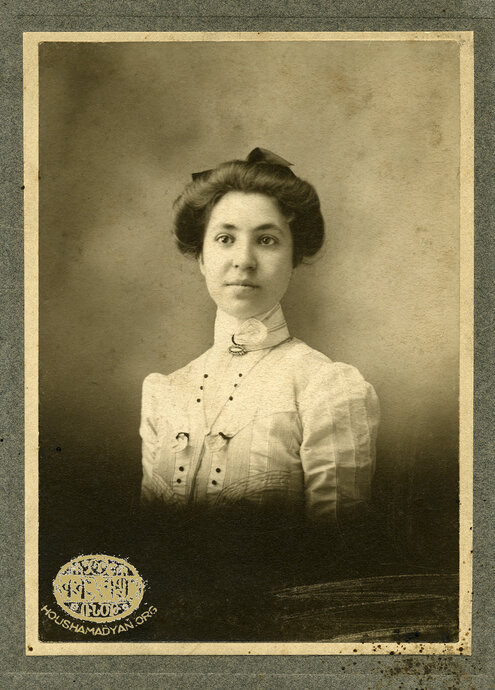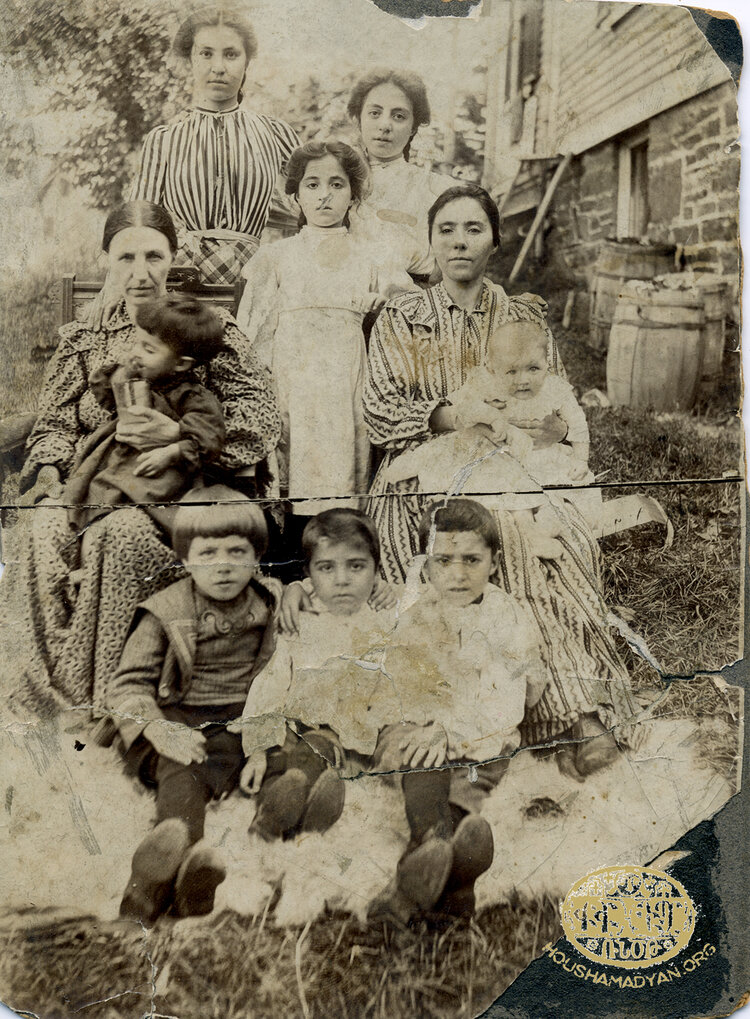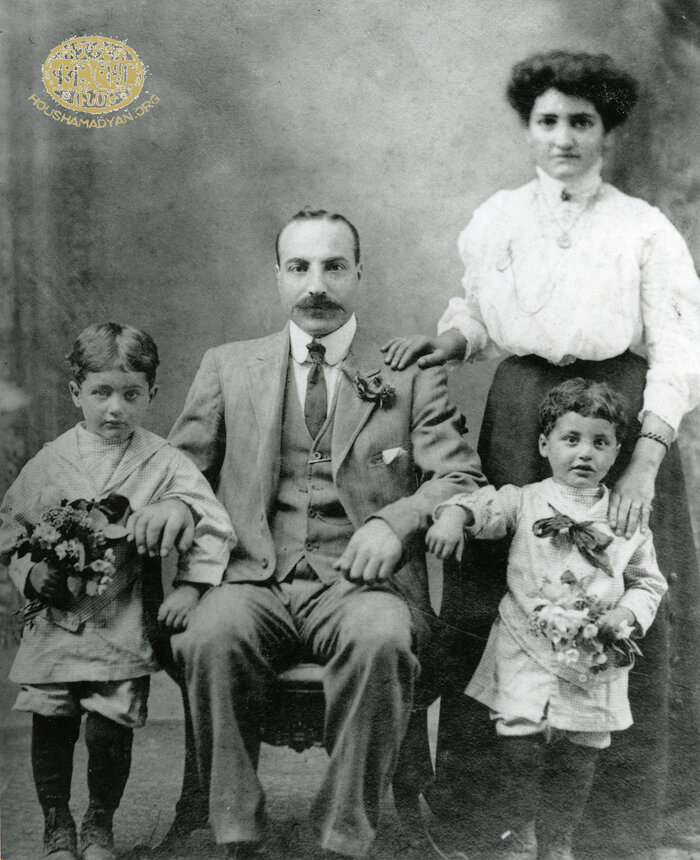Mamigonian Collection - Massachusetts and New Hampshire, USA

This collection of materials was shared with us by Marc A. Mamigonian of Belmont, Mass., and includes items from his paternal grandparents’ families, the Mamigonians of Yerzenga/Erzindjan and the Aslanians of Kesirig; and his maternal great-grandparents’ families, the Malyemezians/Sarkisians of Kharpert/Harput, the Tashjians of Kharpert/Harput, and the Paroonagians/Parnagians of Arapgir.
Marc is grateful to the many family members who have shared photographs, objects, and information over the many years that he has been seeking them out, without whom he would have had little understanding of his family history. The items displayed on this page represent nearly 150 years of family history dating back to the 1870s.

Mamigonian branch
The Mamigonian family came from the city of Yerzenga/Erzindjan. The earliest member of the family for whom there is any visual evidence is Marc’s great-grandfather, Krikor Mamigonian. Krikor married Serpouhi Aladinian, whose parents were Hovsep and Ester, and they had two children, Hmayag (1878-1953), who is Marc’s grandfather, and Dziadzan (born in 1884). According to Surmenian’s Yerzenga, “Mamigonian was the capable principal of the city’s schools for many years, and upon the urging of the Sourp Nishan parish council was ordained by Archbishop Timaksian. However, the strain of teaching had taken its toll on his health the deprivation of fasting weakened him further. The poor man, after having celebrated his first badarak, died at the age of 45.” Krikor kahana Mamigonian was buried in the garden at Sourp Nishan church.
According to family oral tradition, Hmayag was supposed to become a priest like his father, but his mother was afraid the same fate would befall her son as befell her husband. Instead, Hmayag became a teacher and a number of his notebooks for teaching sharagans have been preserved. Hmayag and Dziadzan immigrated to America, arriving on October 1, 1903, with their destination Nashua, NH. Their mother joined them in America 1913. During the half century he lived in the U.S. Hmayag, who adopted the American name Harry, lived in Nashua, Worcester, Mass., and Manchester, NH.

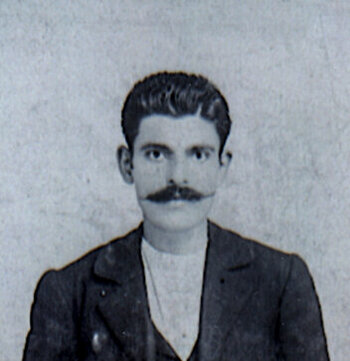
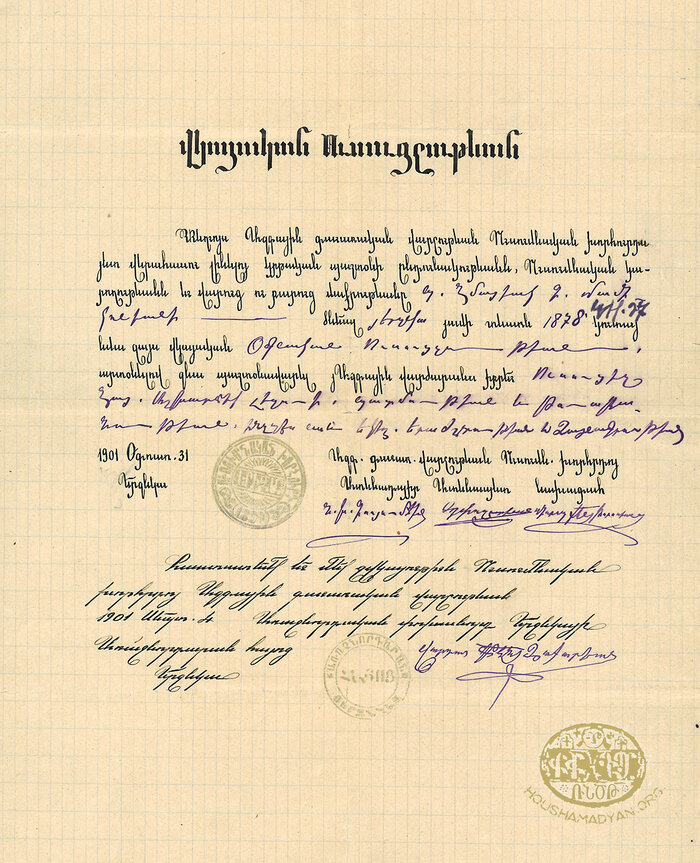
Translation: “The local National Provincial Committee’s council for education, charged with the duty of judging the suitability to instruct and the virtuousness of conduct and morals of Hmayag K. Mamigonian, born in Yerzenga on December 27 in the year of our Lord 1878, grants him this certificate of Assistant Teacher, qualifying him for a position in the National Schools to teach Armenian language, history and mathematics as well as music and vocal arts.” (Thanks to Ani Babaian for translation of this document.)

This notebook of notated Armenian hymns (sharagans) belonged to Hmayag Mamigonian. It is dated August 25, 1897, and the entries were made in Yerzenga/Erzindjan. The pages contain the lyrics of Armenian hymns, alongside accompanying Armenian musical notations. This style of notation is called “Limondjian notation,” named after the Istanbul-based Armenian musicologist Baba Hampartsoum Limondjian, who created a modern form of musical notation based on ancient Armenian musical symbols. Clearly, Hmayag was fluent in this unique type of notation, which was used chiefly in liturgical music.
Another notebook of notated hymns, which also belonged to Hmayag Mamigonian. This one is inscribed “October 12/25, 1902, Yeriza [Yerzenga].” The notebook opens with a table of contents of hymns, tunes, and melodies, separated into columns, and arranged as follows:
1- By order of appearance, with the appropriate page numbers provided.
2- By sound, providing the musical key of each hymn – “A.Ts.” (“Arachin Tsayn” or “first voice,”), “A.G.” (“Arachin goghm” or “first side), “B.Ts.,” “B.G.,” “C.Ts.,” “C.G.,” or “D.Ts.,” “D.G.”
3- By category, denoting the type of hymn, for example – orhnoutyun (blessing), harts (entreaty), medzatsoustse (glorification), voghormya (mercy), Der Yergnits (Lord of heaven), djashou (blessing of meal), or hampartsi (requiem). Some of these hymns were sung during evening services, some in the morning, some before meals, and some at dusk.
4- By name of the hymn, meaning by hymn title (Vor nshanav amenahaght, Orhnetsek mangounk zDer, etc.)
5- By tune and melody, including a list of tunes, melodies, or other compositions that are not hymns, and are therefore listed in a separate column.
6- By musical style, listing the entries according to the type of song or melody, or the corresponding names of Turkish melodies (makams), such as hidjaz, huzam, ushshak, neva, ‘Adjam, saba, rast, etc.
Another page from the notebook of notated hymns. Evidently, Hmayag Mardirosian brought his notebooks with him to the United States from Yerzenga. There are seven such notebooks, with entries from 1897 to 1902. They were kept by his daughter Polly Mamigonian Hovsepian who gave them to Marc Mamigonian.
Another notebook of notated Armenian hymns belonging to Hmayag Mardirosian, dated August 15, 1897.
Additional pages from Hmayag Mardirosian’s notebooks of notated hymns.
Houshamadyan thanks Movses Der Kevorkian for preparing the specialized captions for the pages of Hmayag Mardirosian’s notebooks.

Aslanian branch
Hmayag married Azbahar K. Arslanian (1889-1918) on April 17, 1909, in Worcester. They had a daughter, Ruth (1910-1959). Azbahar, who assumed the name Helen, died in 1918 while giving birth to a stillborn child. Hmayag remarried with Marc’s grandmother Johar Aslanian Mamigonian (1895-1981) on September 20, 1920, in the home of his former in-laws in Worcester. For reasons not clear to anyone, Johar, too, assumed the name Helen.
Johar was born in Kesirig in the Kharpert/Harput region to parents Sarkis and Kohar (née Mardjanian) Aslanian. She had two older brothers, Khachadour and Hagop, and older sisters Zmrout and Zartig. Hagop immigrated to America before the Armenian Genocide. Khachadour, along with his parents, was killed in the genocide. Zmrout was able to escape with her husband Bedros Yagdjian and her children, through Russia, and eventually to America. Zartig and her husband Moses Baronian remained in Kesirig through the war and the genocide, later moving to Aleppo and then Beirut.
1. Aslanian wedding dress fragment: A piece of silk moiré fabric from the wedding dress of Kohar (Mardjanian) Aslanian, Marc Mamigonian's great-grandmother. She married Sarkis Aslanian in Kesirig in the late 1870s. Around 1970 Marc’s aunt Polly Mamigonian Hovsepian had sections framed for members of the family.
2. Djordjorian/Jorjorian fabric sample: This piece of fabric was found in the home of Marc Mamigonian’s late cousins Zabelle Jorjorian (1908-2000) and Irene (Jorjorian) Mazmanian (1910-2007). It is identical to, although less faded than, the fabric used in his great-grandmother’s wedding dress. Zabelle and Irene’s mother Takouhi (Tashjian) was from Kharpert and their father Eghiazar Jorjorian (1871-1939) was from Kesirig, as were the parents of Irene’s husband Oscar Mazmanian (1908-2002), so it seems likely that this fabric must have come from the Kharpert area.
Johar was married to a man named Bechakdjian before the war; he was lost during the genocide. Johar was sent off from Kesirig with the deportation caravan during the summer of 1915 and eventually reached Der Zor. She was among the few who survived the massacres there in 1916. After the war ended, she married Krikor Mardirossian in Aleppo, believed to be a widower, and had a child, Yervant, born in 1919. Subsequently, Mardirossian’s wife, thought to have died during the genocide, was found to be alive. Johar then managed to contact her brother in America and immigrated in 1920 with her son Yervant. Yervant suffered from tuberous sclerosis and epilepsy and died in 1952. With Hmayag, Johar had four children: Aurora (1922-2016), Satenig (Polly, 1924-2014), Krikor (Carroll, 1926-1992), and Kohar (Pearl, 1930-).

Malyemezian (Sarkisian) branch
Giragos (Malyemezian) Sarkisian (1872-1935) of Kharpert/Harput is the first of Marc’s direct ancestors to leave his homeland to come to the United States. Giragos, the son of Sarkis and Anna (Adjemian) Malyemezian, came the U.S. perhaps as early as 1885 and definitely by 1890, settling in Massachusetts and changing his name to Sarkisian. In the late 1890s he was joined by his brother Hagop (who also took the name Sarkisian), and by ca. 1900 he was living in Boston’s South End and managing a restaurant. In 1901 he ran unsuccessfully for Boston City Council, and in 1902 he married Mariam Tashjian in Boston. By 1906 he established the Oriental Bulgoor Co. (Arevelean Boulghouri Eng.) in Worcester, with his brother-in-law, Eghiazar Jorjorian, and a relative, Kevork (Malyemezian) Giragosian. In 1910 this became part of the Ararat Grocery Co. co-founded by Giragos, Nerses M. Thomasian, and Sarkis H. Atamian. Anna (Malyemezian) Sarkisian came to the U.S. in 1923; it is not known when Sarkis Malyemezian died.
Family picture taken ca. 1890-1891 in Kharpert, by Soursourian. The man seated first from the right is Marc Mamigonian’s great-great grandfather Sarkis Malyemezian and the woman at far right is his wife, Anna (née Adjemian). Their eldest living child Giragos (born ca. 1870), is not shown, having already immigrated to the U.S. His younger brother Hagop (born ca. 1877, standing behind parents in photo) emigrated to the U.S. in the late 1890s, also changing his last name to Sarkisian and settling in the Boston area. Hovsep (born ca. 1884) is seated at the feet of his father; he was arrested in May 1915 and killed. Hanum (born ca. 1890) sits between her parents. She immigrated to the U.S. in 1913 and lived in Watertown. The identity of the family grouping on the left side of the photograph is unknown.
The adult male in the photo is Krikor Malyemezian, brother of Marc Mamigonian’s great-great grandfather Sarkis Malyemezian. The adult woman was his 3rd wife, Nazeli. The three women standing are his daughters Aghavny, Mariam, and Arousiag. The young child is Souren Semonian, son of Krikor’s daughter Zabelle (not shown). The photo dates from ca. 1902-1903 and was taken in Kharpert. Source: the collection of Marc's cousin, Manoog S. Young, who was the great-grandson of Krikor Malyemezian. The collection is now part of the NAASR archives.
Hovsep Malyemezian, born ca. 1884 in Kharpert and arrested and murdered in spring 1915. This photograph was taken in Kharpert in 1913 by Soursourian Brothers. It is inscribed for his sister Hanum and was likely given to her upon her departure from Kharpert for America in 1913. Source: the collection of Marc’s cousin, Richard Yerganian, the grandson of Hanum.
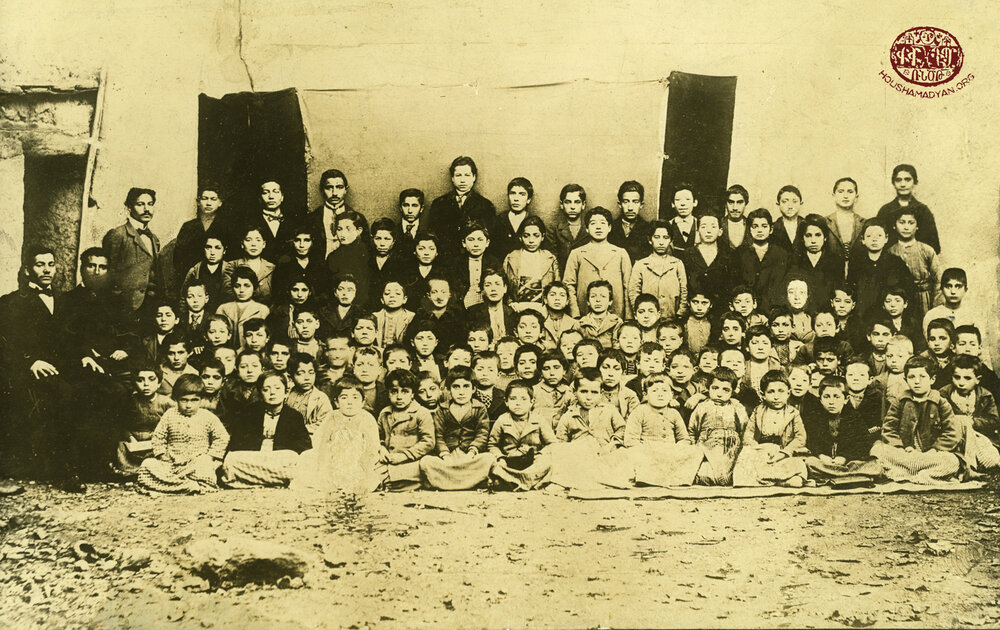
Kharpert/Harput, ca 1900, very likely the students and teachers of the Central School of Kharpert (St Hagop, Upper Quarter). In the back row, 2nd from right: Soghomon Malyemezian, later Soghomon Young (1888-1966). Second cousin twice removed to Marc Mamigonian and father of Manoog S. Young, NAASR Founding Chairman. The man seated 2nd from left is likely Tlgadintsi (Hovhannes Harutiunian), writer and educator. Source: Manoog S. Young collection.
1. Hagop and Hovsep Malyemezian/Sarkisian, brothers of Marc Mamigonian’s great-grandfather Giragos Sarkisian, in Kharpert in 1913. Photo by Soursourian Bros. The empty chair might be for their absent brother Giragos.
2. Sisters-in-law Flora (Missirlian) Sarkisian, Hanum Malyemezian/Sarkisian, and Nartouhi (Tufenkdjian) Malyemezian/Sarkisian, Kharpert, 1913. Flora married Hagop Sarkisian during his return to Kharpert; when he left in 1913 to go back to Boston he took his new wife and his sister Hanum with him.
3. Anna (Adjemian) Malyemezian/Sarkisian, Marc Mamigonian’s great-great grandmother, and her granddaughter Angel Malyemezian/Sarkisian, Kharpert, 1913. Anna was born ca. 1858 in Kharpert, emigrated to the U.S. in 1923 and died in Boston in 1928. Angel, born in 1912, was the eldest child of Hovsep and Nartouhi (Tufenkdjian). She died in Beirut in 1939.
Members of the Malyemezian/Sarkisian family, Kharpert, 1913. Standing, left to right: Flora (Missirlian) Sarkisian (1895-1986), Hanum Malyemezian/Sarkisian (1890-1986), Nartouhi (Tufenkdjian) Malyemezian/Sarkisian (died 1972). Seated: Hagop Sarkisian (husband of Flora), Anna (Adjemian) Sarkisian, Hovsep Malyemezian (husband of Nartouhi). Seated in front, Angel Malyemezian/Sarkisian, daughter of Hovsep and Nartouhi.
Hovsep Adjemian funeral ca. 1905: Death portrait of Marc Mamigonian’s great-great-great grandfather, Hovsep Adjemian, Kharpert, ca. 1905. Kneeling behind the deceased’s head is his daughter, Anna (Adjemian) Malyemezian. At the foot of the coffin, seated, are Anna’s daughters Johar (light hair) and Hanum (dark hair). Standing behind coffin with photo propped in front of him is Anna’s son Hovsep Malyemezian. The photo appears to show his brother, Marc Mamigonian’s great-grandfather, Giragos. (Source: Richard Yerganian - grandson of Hanum - collection).
1. Giragos (Malyemezian) Sarkisian. This is the earliest known photograph of Marc’s great-grandfather, taken in Boston at the Elmer Chickering Studio, perhaps ca. 1890.
2. The Sarkisian family, ca. 1908. Parents Giragos and Mariam Sarkisian and children (left to right) Siranoush (Marc Mamigonian’s grandmother), Sarkis, and Zabelle. Photo by Markarian Studio, Worcester, MA.
Sarkisian families, late 1920s. On left side, standing, Ann Sarkisian, Sarkis Sarkisian, their father Hagop Sarkisian; seated in front on left, mother Flora Sarkisian, and Joseph Sarkisian. On right side, standing, Sarkis Sarkisian, Siranoush Sarkisian, father Giragos Sarkisian, Zabelle Sarkisian; seated in front, mother Mariam Sarkisian. Seated in center, Angel Sarkisian, daughter of Hovsep Sarkisian of Kharpert, brother of Giragos and Hagop, killed in 1915.

Tashjian branch
Mariam Tashjian (1884-1956) was born in Kharpert/Harput to Garabed M. Tashjian (1855-1912) and Margaret (Berberian) (1859-1927). Mariam immigrated to the U.S. in 1897 with her parents and siblings Takouhi (1887-1966) and Mihran (1894-1975), and the family settled in Massachusetts. Mariam married Giragos Sarkisian in 1902 and they had three children: Siranoush (1903-1991), Marc’s grandmother; Zabelle (1905-1994), and Sarkis (1907-1995).
1. Margaret (Berberian) Tashjian (ca. 1859-1927), Marc Mamigonian’s great-great grandmother, portrait by Markarian Studio, Worcester, MA, ca. early 1900s. Margaret was the daughter of Ghougas Berberian; her mother’s name is not known.
2. Mariam (Tashjian) Sarkisian, early 1900s, around the time of her marriage to Giragos Sarkisian (1902).
Seated in chair on the left, Marc Mamigonian’s great-great grandmother, Margaret Tashjian. Her daughters, Marc’s great-grandmother Mariam and great-great aunt Takouhi, standing in rear. Their brother Mihran, seated on ground on left. Others in photo, presumed to be relatives, not identified. The photo may have been taken in Watertown, MA, ca. 1900.

Paroonagian branch
Marc’s maternal grandfather’s father, Ardashes Paroonagian (1871-1929), and mother, Mariam (Emanatian) (1885-1973) were born in Arapgir. Ardashes was the son of Manoug (born ca. 1840) Paroonagian and Dasta (née Ejdaharian) (born ca. 1852). Ardashes emigrated to the U.S. in 1892 and married Mariam in Philadelphia in 1904. They moved to Lawrence, Mass., where a number of other relatives also lived. Marc’s grandfather, Aram (1905-1983) was born there as was his brother Yeznig (1906-1996). The family moved to Boston around 1912 and another child, Sirvart (1917-1983) was born there.
Marc’s maternal grandparents Aram Parnagian/Paroonagian and Siranoush Sarkisian met in Boston and were married there in 1934. They moved to Dover, NH, where Marc’s mother Evelyn (1937-) and aunt Elaine (1940-) were born.
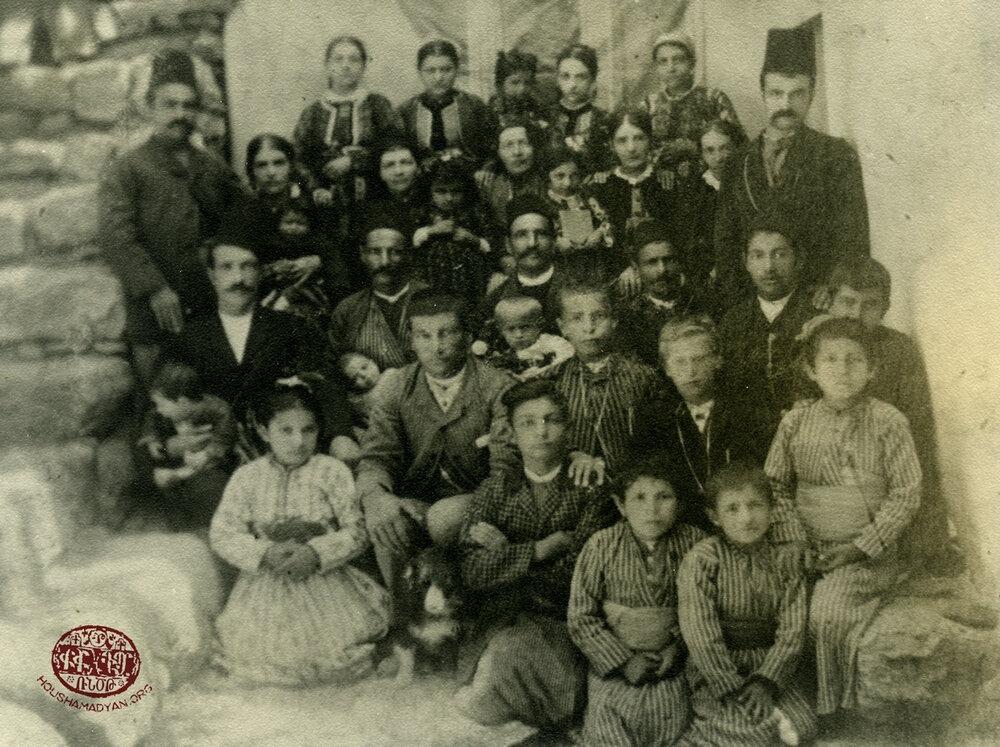
Members of the Paroonagian family, Arapgir, ca. 1892. The woman who is 3rd from left in the 2nd row from back is Marc Mamigonian’s great-great grandmother, Dasta Paroonagian (née Ejdaharian); she was the paternal grandmother of his maternal grandfather Aram Parnagian/Paroonagian.

